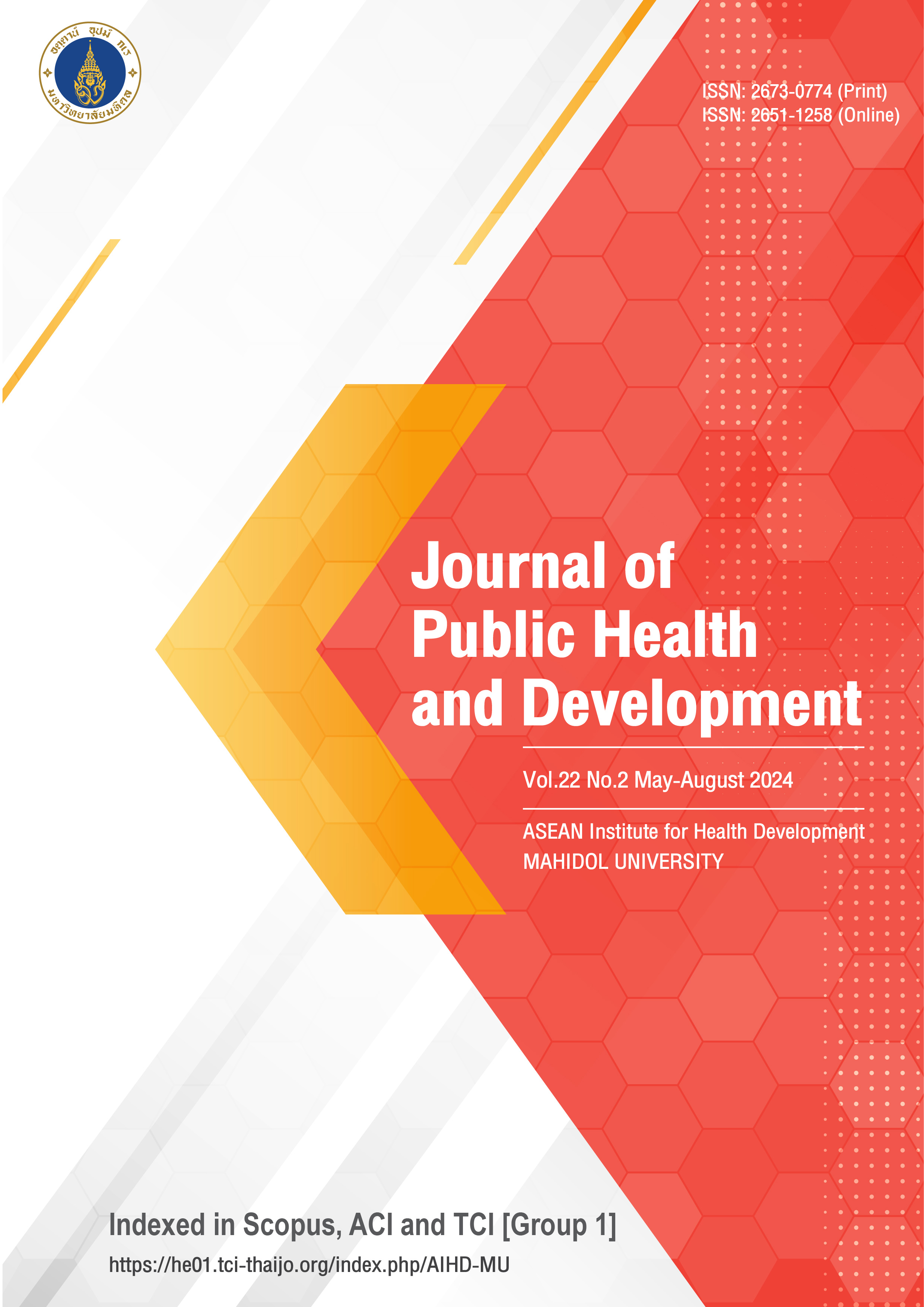Characteristics of mask adherence in low and medium-income countries and high-income countries: Results from round II of the global COVIDiSTRESS survey 10.55131/jphd/2024/220225
Main Article Content
Abstract
Many studies have connected mask-wearing during the coronavirus pandemic to various characteristics and beliefs; yet much of this research has been conducted in wealthy countries in the Global North. Performing a secondary analysis of the COVIDiSTRESS survey, conducted online in 137 countries between May 28th and August 29th of 2021, we find that there are important differences in the characteristics related to mask adherence in places the World Bank classifies as low and medium-income countries (LMICs) and high-income countries (HICs). Our findings suggest that: (1) identifying as a woman has a stronger impact on the likelihood of mask adherence in HICs than LMICs; (2) an increase in age only has a positive impact on mask adherence in LMICs; (3) SES (especially higher levels of education) has a much stronger positive impact on mask adherence in LMICs than HICs; (4) while a belief in conspiracy theories has a stronger negative impact in HICs than LMICs, this result is not statistically significant; and (5) acquiring of scientific information on COVID-19 is only positively correlated with an increased likelihood of mask adherence in LMICs. If there is another pandemic, we argue that this shows that research on mask adherence conducted in the Global North should not simply be applied to countries in the Global South.
Article Details

This work is licensed under a Creative Commons Attribution-NonCommercial-NoDerivatives 4.0 International License.
References
Howard J, Huang A, Li Z, Tufekci Z, Zdimal V, Van Der Westhuizen HM, Von Delft A, Price A, Fridman L, Tang LH, Tang V. An Evidence Review of Face Masks Against COVID-19. Proc Natl Acad Sci U S A. 2021 Jan 26;118(4):e2014564118.
Looi KH. Contextual Factors of Face Mask Wearing During the COVID-19 Pandemic and Recommendations to Increase Compliance Rate. The Malaysian Journal of Medical Sciences: MJMS. 2022 Feb;29(1):147. doi: 10.21315/mjms2022.29.1.15
Chukwuocha UM, Ogboeze JC, Bosede AO, Oduenyi LA, Chukwujekwu AB, Okoye SC, et al. Use of facemasks during the COVID-19 pandemic in Southeastern Nigeria: an observational study. J Public Health Dev. 2022;20(2):110- 25. doi.org/10.55131/ jphd/2022/200209
Brankston G, Merkley E, Fisman DN, Tuite AR, Poljak Z, Loewen PJ, Greer AL. Socio-demographic disparities in knowledge, practices, and ability to comply with COVID-19 public health measures in Canada. Can J Public Health. 2021 Jun; 112:363-75. doi: 10.17269/s41997-021-00501-y
Haischer, MH, Beilfuss R, Hart MR, Opielinski, L, Wrucke D, Zirgaitis G, Uhrich TD, Hunter SK. Who is wearing a mask? Gender-, age-, and location-related differences during the COVID-19 pandemic. PloS one. 2020 Oct 15(10):e0240785. doi.org/10.1371/ journal.pone.0240785
Liu E, Arledge S. Individual characteristics and demographics associated with mask wearing during the COVID-19 pandemic in the United States. Asian J. Soc. Health Behav2022 Jan 1;5(1):3-9. doi: 10.4103/shb.shb_ 148_21
Stosic MD, Helwig S, Ruben MA. Greater belief in science predicts mask-wearing behavior during COVID-19. Pers Individ Dif. 2021 Jul 176:110769. doi: 10.1016/j.paid.2021.110769
Beca‐Martínez MT, Romay‐Barja M, Falcón‐Romero M, Rodríguez‐Blázquez C, Benito‐Llanes A, Forjaz MJ. Compliance with the main preventive measures of COVID‐19 in Spain: The role of knowledge, attitudes, practices, and risk perception. Transbound Emerg Dis. 2022 Jul;69(4): e871-82. doi: 10.1111/tbed.14364
MacIntyre CR, Nguyen PY, Chughtai AA, Trent M, Gerber B, Steinhofel K, Seale H. Mask use, risk-mitigation behaviours and pandemic fatigue during the COVID-19 pandemic in five cities in Australia, the UK and USA: A cross-sectional survey. Int J. Infect Dis. 2021 May 1;106:199-207. doi: 10.1016/j.ijid.2021.03.056
Warnock-Parkes E, Thew GR, Clark DM. Belief in protecting others and social perceptions of face mask wearing were associated with frequent mask use in the early stages of the COVID pandemic in the UK. Front Psychol. 2021 Oct 22;12:680552. doi: doi.org/ 10.3389/fpsyg.2021.680552
Siani A, Green I. Scientific Misinformation and Mistrust of COVID-19 Preventive Measures among the UK Population: A Pilot Study. Vaccines. 2023 Jan 30;11(2): 301. https://doi.org/10.3390/vaccines 11020301
Garry J, Ford R, Johns R. Coronavirus conspiracy beliefs, mistrust, and compliance: taking measurement seriously. Psychol Med. 2022 Oct;52(14):3116-26. doi: 10.1017/ S0033291720005164
Pasquale S, Gregorio GL, Caterina A, Francesco C, Beatrice PM, Vincenzo P, Caterina PM. COVID-19 in low-and middle-income countries (LMICs): a narrative review from prevention to vaccination strategy. Vaccines. 2021 Dec 14;9(12):1477.
Deaton A. COVID-19 and global income inequality. National Bureau of Economic Research; 2021 Jan 25.
COVIDiSTRESS II Consortium. COVIDiSTRESS diverse dataset on psychological and behavioural outcomes one year into the COVID-19 pandemic. Sci Data. 2022 Dec;9(1): 331. doi: 10.1038/s41597-022-01383-6
Sobreira, J. Logit/Probit: How to compare coefficients between groups. StataList, The Stata Forum [Internet]. 2015. Available from www. statalist. org/forums/forum/general-stata-discussion/general/1302193-logit-probit-how-to-compare-coeficients-between-groups-n-and-m-size
Oladejo AO, Jack JT. Of COVID-19 Transmission Control: An Analysis of Logic of Rights and Ethics of Duty. Comp Sociol. 2022 Aug 11;21(4):373-94. doi: 10.1163/15691330-bja10053
Jallali P. Coronavirus: Differentiating the global North and the Global South. In: Morady F, editor. The Unprecedented Impacts of COVID-19 and Global Responses. London (UK): IJOPEC Publication; 2021. p. 45-55.






